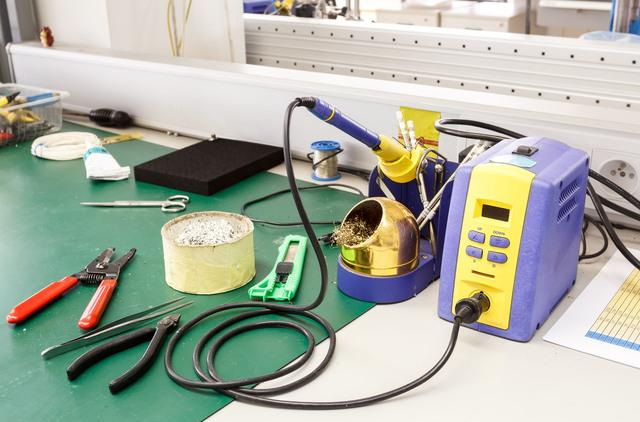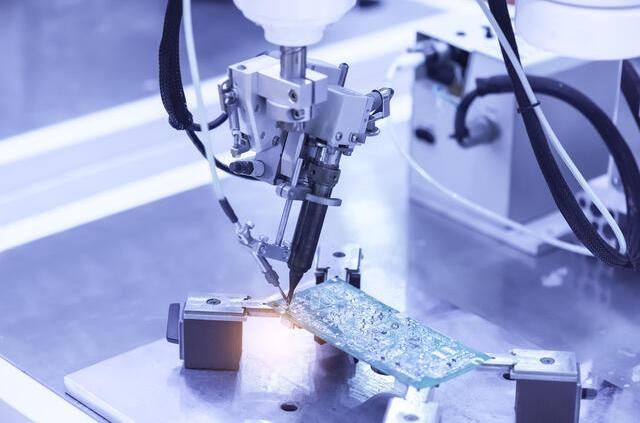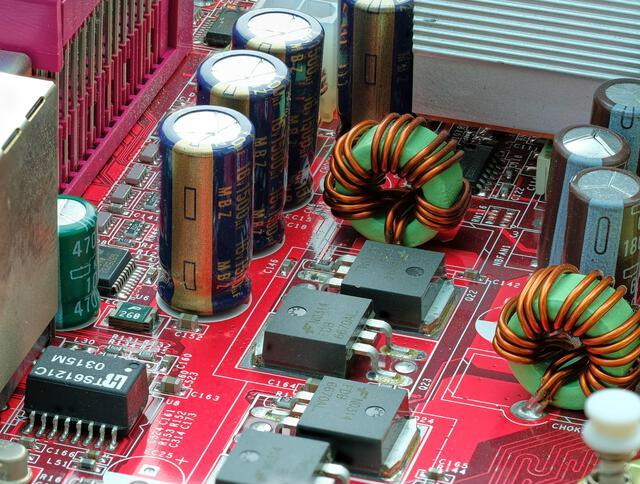Content Menu
● Introduction
● Key Principles of SMT Line Optimization
>> Load Balancing
>> Lean Manufacturing Principles
>> Automation
● Strategic Layout Design
>> Machine Placement
>> Material Handling
>> Space Utilization
● Technological Innovations
>> Simulation Tools
>> Predictive Maintenance
● Workforce Training and Management
>> Continuous Training
>> Team Collaboration
● Continuous Improvement Strategies
>> Regular Reviews
>> Feedback Mechanisms
● Ergonomics and Safety Considerations
>> Ergonomic Workstations
● Types of SMT Line Layouts
● Conclusion
● FAQ
>> 1. What is the significance of optimizing SMT production line layouts?
>> 2. How does automation contribute to SMT line efficiency?
>> 3. What are the best practices for machine placement in SMT lines?
>> 4. Why is workforce training crucial in SMT production?
>> 5. How can lean manufacturing principles be applied to SMT lines?
● Citations:
Introduction
Surface Mount Technology (SMT) has revolutionized the electronics manufacturing industry by enabling the assembly of smaller, faster, and more reliable electronic devices. As competition intensifies, optimizing SMT production line layouts becomes essential for maximizing efficiency, reducing costs, and ensuring high-quality output. This article explores various strategies to optimize multiple SMT production line layouts for maximum efficiency.

Key Principles of SMT Line Optimization
Load Balancing
Load balancing is crucial for maintaining an efficient SMT production line. It involves distributing the workload evenly across all machines to prevent bottlenecks. By analyzing the capabilities of each machine and the time required for each operation, manufacturers can ensure that no single machine is overwhelmed while others remain underutilized.
Lean Manufacturing Principles
Implementing lean manufacturing principles helps minimize waste and streamline processes. Techniques such as 5S (Sort, Set in order, Shine, Standardize, Sustain) and value stream mapping can identify inefficiencies in the production flow. By focusing on continuous improvement and eliminating non-value-added activities, manufacturers can enhance overall productivity.
Automation
Automation plays a significant role in optimizing SMT lines. Automated systems can handle repetitive tasks such as solder paste application, component placement, and inspection. This not only speeds up production but also reduces human error, leading to improved product quality.
Strategic Layout Design
The design of an SMT production line layout significantly impacts its efficiency. Here are key considerations for strategic layout design:
Machine Placement
Machines should be arranged in a logical sequence that mirrors the assembly process. For example, placing the screen printer at the start of the line followed by pick-and-place machines and reflow ovens minimizes PCB movement and reduces the risk of damage or misalignment.
Additionally, employing machine placement strategies that minimize idle time—such as group technology or parallel placement—can further enhance efficiency. This approach allows for better coordination among machines, leading to reduced waiting times and increased throughput.
Material Handling
Efficient material handling is critical for maintaining a smooth workflow. Implementing just-in-time (JIT) inventory systems ensures that materials are available when needed without excess inventory cluttering the workspace. Automated material handling systems like conveyors can also streamline the movement of components.
Proper storage solutions, such as climate-controlled environments for sensitive components, are essential to maintain quality and prevent damage.
Space Utilization
Maximizing space utilization is essential in a multiple SMT production line setup. Adequate spacing between machines allows for easy access and maintenance while preventing overcrowding that can lead to inefficiencies.
Moreover, ensuring there is enough space for operators to move freely and perform maintenance tasks without obstructing production flow is vital for maintaining high productivity levels.
Technological Innovations
Integrating advanced technology into SMT production lines can significantly enhance efficiency:
Simulation Tools
Utilizing simulation tools allows manufacturers to create virtual models of their production lines. These tools enable testing different layout configurations and evaluating their impact on performance before implementation, thus avoiding costly mistakes.
Simulation tools can also help identify potential bottlenecks in the process flow and allow adjustments to be made before actual deployment.
Predictive Maintenance
Implementing predictive maintenance strategies helps anticipate equipment failures before they occur. By monitoring machine performance data and scheduling maintenance proactively, manufacturers can reduce downtime and maintain consistent production rates.
Additionally, real-time monitoring systems can provide insights into machine performance and detect issues before they escalate into significant problems.
Workforce Training and Management
The effectiveness of an SMT production line is heavily reliant on skilled operators:
Continuous Training
Investing in continuous training programs ensures that operators are well-versed in the latest technologies and best practices. Skilled personnel can troubleshoot issues quickly and maintain smooth production flows, directly impacting efficiency.
Training should cover not only equipment operation but also best practices in quality control and troubleshooting common issues that may arise during production.

Team Collaboration
Encouraging collaboration among team members fosters a culture of continuous improvement. Regular feedback sessions can help identify areas for optimization and promote innovative solutions to enhance productivity.
Establishing feedback mechanisms allows operators to report issues or suggest improvements based on their experiences on the floor. This input is invaluable for making informed decisions about layout changes or process adjustments.
Continuous Improvement Strategies
Optimization is not a one-time task but an ongoing process:
Regular Reviews
Conducting regular reviews of production performance helps identify bottlenecks and areas for improvement. Analyzing key performance indicators (KPIs) such as cycle time, yield rates, and equipment utilization provides insights into where changes are needed.
Engaging operators in feedback loops allows for practical insights into potential improvements based on their experiences on the floor.
Feedback Mechanisms
Establishing feedback mechanisms allows operators to report issues or suggest improvements based on their experiences on the floor. This input is invaluable for making informed decisions about layout changes or process adjustments.
Ergonomics and Safety Considerations
In addition to efficiency metrics, ergonomics plays a crucial role in optimizing SMT lines:
Ergonomic Workstations
Operator comfort should not be overlooked in SMT line design. Workstations should be designed with ergonomics in mind to reduce strain and enhance efficiency. Properly designed workstations can minimize fatigue during long shifts, leading to improved focus and productivity.
Safety measures such as proper lighting, ventilation, and clearly marked emergency exits are essential for a safe working environment. Ensuring that safety protocols are followed helps prevent accidents that could disrupt production.
Types of SMT Line Layouts
There are several types of SMT line layouts that manufacturers can choose from based on their specific needs:
- In-line Layout: Machines are arranged in a straight line; ideal for high-volume production but less flexible.
- U-Shaped Layout: Provides flexibility and good visibility; suitable for varying board sizes.
- L-Shaped Layout: Efficient use of limited space; good for high production volumes.
- Cellular Layout: Configured into cells for specific operations; ideal for customized or low-volume productions.
- Dual Lane Layout: Two parallel lines increase throughput; effective for high-volume production.
Choosing the right layout depends on factors such as production volume, product variety, available space, and operational flexibility requirements.
Conclusion
Optimizing a multiple SMT production line layout requires a multifaceted approach that includes strategic design, technological integration, workforce training, ergonomics considerations, and continuous improvement practices. By focusing on load balancing, lean manufacturing principles, automation integration, effective material handling, operator training, and safety measures, manufacturers can achieve maximum efficiency in their SMT operations.
The benefits of an optimized layout extend beyond increased productivity; they also enhance product quality and reduce operational costs. As technology continues to evolve, staying informed about advancements in SMT machinery and techniques will further aid in maintaining an efficient production environment. Ultimately, a well-designed SMT production line not only meets current demands but also adapts to future challenges in the ever-changing landscape of electronics manufacturing.

FAQ
1. What is the significance of optimizing SMT production line layouts?
Optimizing SMT production line layouts ensures efficient material flow, reduces bottlenecks, enhances overall productivity and product quality while minimizing waste.
2. How does automation contribute to SMT line efficiency?
Automation reduces manual errors, speeds up production processes by handling repetitive tasks automatically while ensuring consistent quality throughout manufacturing operations.
3. What are the best practices for machine placement in SMT lines?
Machines should be arranged logically following the assembly process flow to minimize PCB movement while reducing risks associated with misalignment or damage during transit between stages.
4. Why is workforce training crucial in SMT production?
Skilled operators manage equipment efficiently while troubleshooting issues quickly; this directly impacts overall productivity levels as well as ensuring smooth operational flows throughout manufacturing processes.
5. How can lean manufacturing principles be applied to SMT lines?
Lean principles focus on minimizing waste through optimizing workflows alongside continuous improvement methodologies which enhance efficiency while reducing costs associated with non-value-added activities within manufacturing operations.
Citations:
[1] https://www.gssmt-parts.com/how-to-optimize-your-smt-production-line-layout.html
[2] https://www.adoptsmt.com/en/efficiency-enhancement-in-smt-manufacturing/
[3] https://www.smtfactory.com/Perfecting-Your-SMT-Line-Layout-for-Efficiency-id47017676.html
[4] https://www.gssmt-parts.com/how-to-optimize-your-smt-line-setup-for-high-speed-production.html
[5] https://www.neodensmt.com/news/improve-smt-production-efficiency-48868013.html
[6] https://core-emt.com/blog/smt-news-1/identifying-addressing-smt-line-bottlenecks-to-plan-line-upgrades-smartly-119
[7] https://www.smtfactory.com/Optimizing-Efficiency-Strategies-for-A-Smooth-SMT-Line-Production-Process-id47463586.html
[8] https://www.smtneoden.com/news/how-to-effectively-improve-the-production-efficiency-of-pcb-smt-machine/
[9] https://www.rayprasad.com/three-steps-to-improve-smt-yield
[10] https://www.raypcb.com/line-efficiency/
[11] https://rushpcb.com/line-efficiency-of-a-pcb-manufacturer/
[12] https://es.hayawin.com/resources/how-to-optimize-pcb-design-for-smt-assembly-process-flow.html
[13] https://resources.sw.siemens.com/zh-TW/white-paper-improving-shop-floor-productivity/
[14] https://resources.pcb.cadence.com/blog/2020-how-to-optimize-pcb-design-for-smt-assembly-process-flow
[15] https://www.smthelp.com/methods-and-measures-to-improve-the-production-efficiency-of-smt-production-line
[16] https://www.andwinpcb.com/optimizing-double-sided-smt-assembly-for-enhanced-efficiency/
[17] https://blogs.sw.siemens.com/valor-dfm-solutions/how-to-optimize-pcb-design-for-the-smt-assembly-process-flow/
[18] https://pcbtrace.com/techniques-to-streamline-and-optimize-pcb-assembly/




















